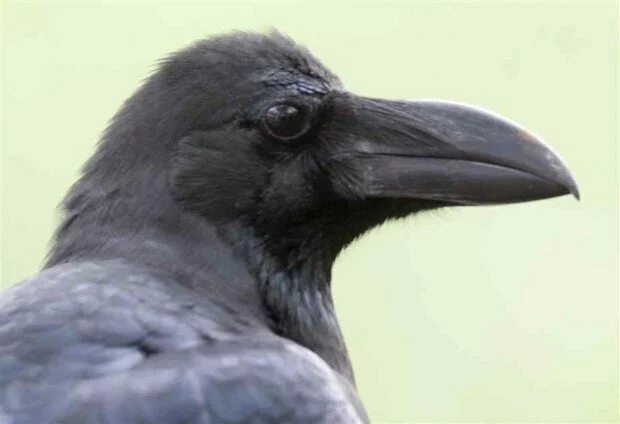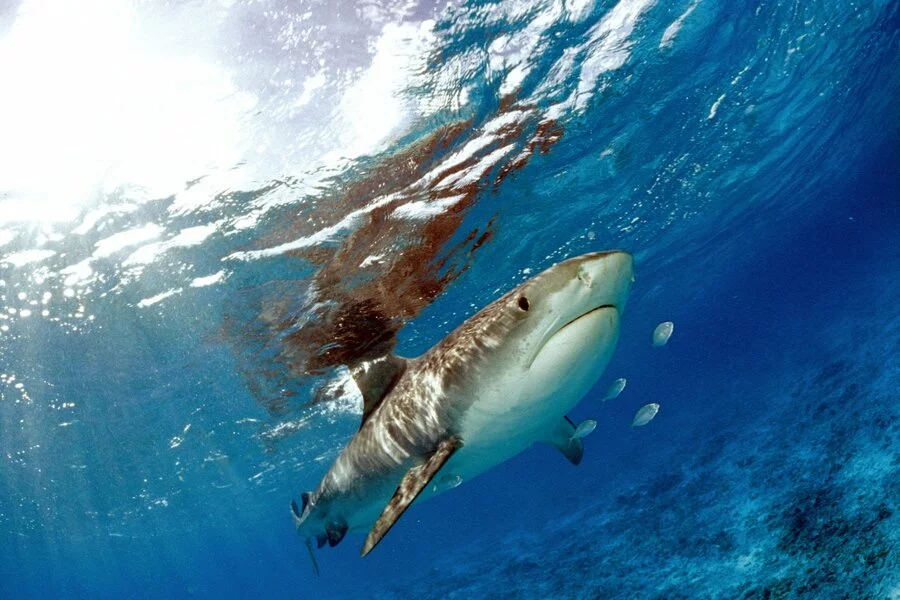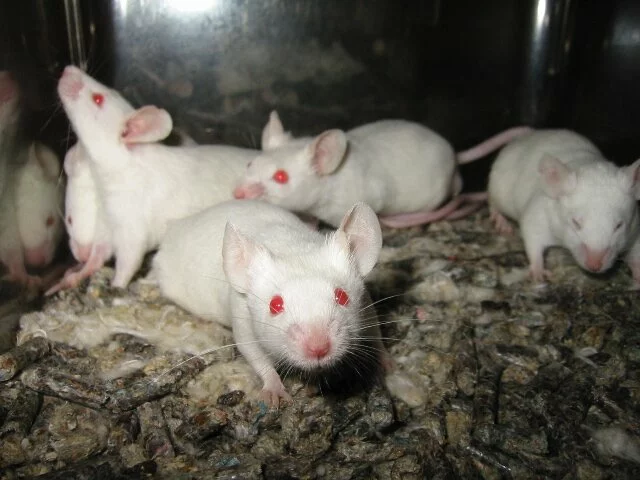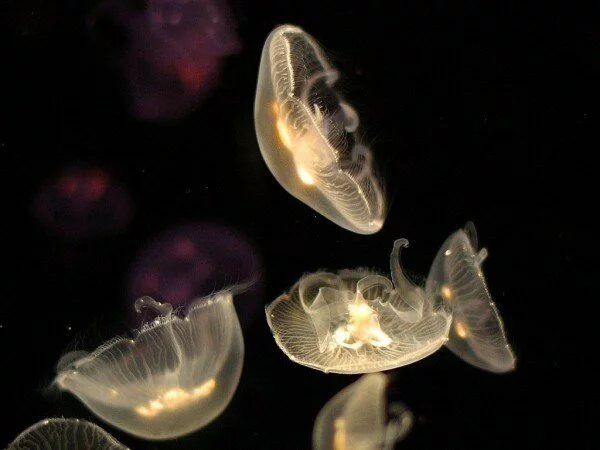On the Cognition of Crows and Ravens: Contemporary Research into Nature’s Brightest Minds
Crows and ravens have been feared, hated, revered, and worshiped throughout human history, constantly exerting a powerful hold over the psyche of people throughout the ages. Some cultures viewed them as the harbingers of doom, while others saw the birds as the sacred servants of almighty gods. Their ability to attract the attention of humans is still present today, as both feelings of hostility and admiration are directed toward these birds. Some humans view them as troublesome pests, while others see in them the same mysterious traits that our ancient ancestors did many generations ago. Indeed, “mysterious” is an excellent word to describe these animals, as the more we observe them, the more we realize just how little we really knew about them. Recent scientific research has allowed us to observe an incredibly high level of intelligence and cunning in crows and their relatives. In fact, there is evidence that the clever birds may very well surpass the great apes in intellect. This level of advanced brainpower, along with their eerie calls and adornment of dark plumage, may have been the driving force behind the fear and respect that humans harbored for these animals. Yet, the fact is that there is still much to be learned about this interesting group of birds, and science has just begun to unravel the mysterious behaviors of these animals.
Crows, named after their famous hoarse cries, represent a single genus of 42 species within the family of Corvidae. This genus is known as Corvus, and its largest members are known as the ravens, while many of the smaller members are called crows. The smallest of the group’s species are called jackdaws.[1] Other members of the Corvidae family include magpies and jays. Size varies considerably from species to species, with some birds being as small as pigeons while the largest ravens can grow as long as 24-27 inches.[2]
Corvids, or members of the Corvidae family, are among the most successful animals on earth, possessing a massive geographic distribution. The family is represented by species located in all temperate zones in all of the continents except for Antarctica and, strangely enough, South America. They can be observed in various oceanic islands, including Hawaii. Evidence suggests that the ancestors of these birds first appeared in Central Asia and soon extended their territories to North America (including Mexico), Africa, Europe, and Australia.[3]
A major reason for the success of crows is their omnivorous diet, which allows them to consume a wide variety of food items. Their natural food consists of an assortment of small invertebrates, fruits, and seeds. One particular species, the fish-crow (Corvus ossifragus) possesses a more specialized diet which includes fish along with shrimps, crabs, and other crustaceans, though it will also consume fruit, grains, peanuts, small reptiles, and even the small nestlings of other types of birds. Several other crow species may also feed on fish which have been washed ashore by the sea, though they rarely draw fish from the water themselves.[4]
The ability of this group of birds to travel and adapt to other areas successfully is what has allowed them to impact the cultures of various societies throughout history. In mythology, there is some confusion between crows and ravens as, apart from size, the two seem almost interchangeable. Nonetheless, the two animals are present in the spirituality and myths of different cultures. Whereas ravens almost always appear as signatory animals for deities in Europe, Shamanic cultures of aboriginal North American tribes view the raven as an actual deity itself. In the American Northwest coast region, the raven can adopt both a heroic and villainous nature (often at the same time) and is an essential part in a Tlingit creation myth, where it is either plays an important part in the creation of the world or possesses the role of the actual creator itself. The raven is also a legendary shape shifter in this culture, capable of transforming into anyone or anything in order to achieve its goals. Its character is commonly driven by greed in many tales, as one Tlingit story states that the raven could never become satisfied after having eaten the black spots off its own toes and, thus, it wanders throughout the world in search of things to eat. Throughout these travels, the raven encounters a wide variety of animals and commonly succeeds in contests of wit with them, either destroying and eating them or driving them away and securing their food. The Haida people make a distinction between the initial creation accounts involving the raven and the latter stories depicting its more risible behavior. Some of the creation myths are surprisingly complex, whereas others are much simpler; one Haida creation tale simply depicts a raven standing on a speck of land in a massive ocean engulfing the entire planet and commanding the waters to become dust, creating the continents of the modern world. In other tales, depicting the fascination corvids have for shiny objects, the raven manages to steal the sun, stars, and fire itself. Finally, the avian deity becomes responsible for a massive flood which brings about the end of the age of animal beings while beginning the age of humans. In tales where the crow is presented as the main character, the stories usually concern themes of justice rather than greed, although there are occasions where justice ultimately never carried out and others where it is excessive. In other tales, the crow serves as a representation for aggressive goddesses, such as the battle goddesses of Irish myths.[5]
There are an incredible number of other mythological stories which involve ravens and crows in prominent roles, but explaining all of these would require far too much time and space. What can be said is that the reputation these birds were given throughout history as symbols of destruction is ill-deserved, as several stories have the birds carrying out justice or even creating the world itself. While the animals do have direct connections with death in some myths, their roles in many cultures are significantly different. Ultimately, they are creatures of intellect and creativity rather than creatures of destruction. In reality, this character of cleverness and creative ability is more in line with a corvid’s natural behavior.[6]
Though the mythological and symbolic history of these animals in the minds of humans is certainly interesting, one must step back into reality and science in order to truly understand them. By studying their behavior, we can interpret their actions and see just what exactly earlier civilization saw in these creatures that inspired their roles in countless stories. It was through scientific research that scientists were able to properly observe the unexpectedly high level of intelligence that these animals possess, intelligence which appears to rival or even surpass that of great apes.
Although crows are not the only animals which make use of tools, one crow species known as the New Caledonian crow (Corvus moneduloides) takes this trait to a level beyond that of any other animal. In an experiment conducted by three Oxford University researchers, two New Caledonian crows named Abel and Betty were presented with a hooked wire and a straight wire which would be necessary for retrieving food. Abel made off with the hooked wire, which would have been the more effective tool for retrieving the meal. This, however, was no problem for Betty, as she simply bent the straight wire into a hook which she used to lift a small bucket of food from a vertical pipe. This experiment was also the first time that the crows were presented with wires. Alex Kacelnik, the behavioral ecologist who coauthored the report with Alex A.S. Weir and Jackie Chappell, states that in the wild, New Caledonian crows create hooks by working on objects such as twigs. However, the wild crows live in social groups and follow very old techniques in response to problems the species may have been exposed to for thousands of years. Betty was caught as a juvenile in Yaté, New Caledonia in March 2000. Since then, she has shared a large indoor room and a smaller outdoor aviary with Abel, a male crow brought to the laboratory after spending ten years in a New Caledonia zoo. Betty’s experience in tool making would have been rather limited at best and she had no other crows to model and no training with pliant objects. Yet she was able to exploit what few abilities she acquired in her brief time in the wild to solve a new problem in a creative way. This creative problem-solving may very well be evidence of inferential reasoning on the crow’s part.[7] Candace Savage, a nature writer based in Saskatoon, Canada, who has written concerning the latest results in crow research, states, “No other animal—not even a chimp—has ever spontaneously solved a problem like this, a fact that puts crows in a class with us as toolmakers,” in response to the Oxford research results.[8]
Alex Kacelnik and his colleagues have demonstrated that New Caledonian crows are born toolmakers; there is a genetic component to this behavior. This finding, Kacelnik states, fits the idea that higher intelligence requires a genetic imprint to foster more advanced behaviors such as learning and innovation. In other words, these special genetic imprints play a necessary part in the heightened intelligence found among the most advanced of creatures, including humans. “There are three elements: what animals inherit, what animals learn by individual experience, and what animals acquire through social input,” he says. Kacelnik goes on to explain that it is erroneous to believe these elements compete. In reality, they coalesce, enhancing each other.[9]
Another experiment, this time carried out on American crows (Corvus brachyrhynchos) by University of Washington Professor John Marzluff and his fellow researchers, showed that the clever birds are also capable of sharing their knowledge of enemies with each other. In this experiment, two researchers wearing identical “dangerous” masks trapped, banded, and released 7-15 birds at five different sites near Seattle. In order to determine the impact of the capture on the crow population, observations were made about the crows’ behavior by having the two researchers walk through a designated route that included a trapping site. The masks worn by these observers were either “neutral” masks or the “dangerous” masks worn during the initial trapping event. Within the first two weeks after trapping, an average of 26% of encountered crows scolded the person wearing the dangerous mask. This scolding is carried out as a harsh alarm call directed repeatedly at the threat accompanied by agitated wing and tail flicking. This behavior is soon accompanied by mobbing, where additional crows join in on the scolding. After 1.25 years, 30.4% of crows encountered by people wearing dangerous masks scolded consistently, with the figure increasing to around 66% three years after the initial trapping. Study co-author Marzluff noted that the area over which the awareness of the threat had spread also grew significantly during the study. Incredibly enough, during the same time frame, there was no change in the rate of scolding towards the person wearing the neutral mask. Marzluff states that their work shows the knowledge of the threat is passed on between peers and from parent to child. “Crows recruit and tolerate others of their own and different species in mobs that form around dangerous people,” he says. “This social tolerance could allow naïve crows to learn about dangerous situations, locations, and individual humans.” Marzluff thought that the memory of the threat’s potency would diminish as time went by. However, these crows were not to be underestimated. “They hadn’t seen me for a year with the mask on and when I walked out of the office they immediately scolded me,” says Marzluff. He went on to explain the precision of the crow’s identification of the dangerous person. The initial “dangerous” mask was a caveman’s face, while the neutral or control face was a mask of former U.S. vice-president Dick Cheney. The team did, however, make six other masks consisting of combinations of male, female, Caucasian, and Asian faces which were used at various other sites as dangerous or neutral faces. Despite how similar these masks were in appearance to each other, the crows were very effective at identifying which person was dangerous to them.[10] These results are nothing short of amazing, as these intelligent birds continue to shock researchers with their abilities.
Ravens have also revealed some of their own clever tricks. This is demonstrated by their notable ability to manipulate the outcomes of their social interactions, according to book author Candace Savage (mentioned earlier). She highlights raven research by University of Vermont zoologist Bernd Heinrich showing how juvenile and adult ravens differ when feeding on a carcass. Juvenile ravens often cause a ruckus when feeding to recruit fellow young ravens to the site of the carcass for added safety against competition with adult ravens, crows, and other scavengers. The adult ravens, on the other hand, arrive at the feeding site in pairs and keep quiet to avoid drawing the attention of other scavengers to the food, thus reducing competition for food. Savage also discusses Swiss zoologist Thomas Bugnyar’s research showing how a smart raven named Hugin learned to deceive a more dominant raven named Mugin into looking for morsels of cheese in an empty container while Hugin snuck away and raided full containers. Savage writes, “This shady behavior satisfies the definition of ‘tactical’, or intentional, deception and admits the raven to an exclusive club of sociable liars that in the past has included only humans and our close primate relatives.”[11] Indeed, it appears that the birds have shattered our expectations, rendering the old term “birdbrain” null and void, or perhaps changing it into more of a compliment.
Despite the fact that the avian brain is structured quite differently in comparison to a mammalian brain, it is clear from various scientific studies that corvids process information similarly to animals such as primates. Both groups use a combination of mental tools, including imagination and the anticipation of possible future events, to solve similar problems. Nathan Emery and Nicola Clayton of the departments of animal behavior and experimental psychology at Cambridge University, England, state that “some corvids are not only superior in intelligence to birds of other avian species (perhaps with the exception of some parrots), but also rival many nonhuman primates.” Thus, it should not come as a surprise that crows possess unusually large brains for their size. In fact, Emery and Clayton state that a crow’s brain is relatively the same size as a chimpanzee’s. They go on to say that both crows and apes think about their social and physical surroundings in complex ways, using tool use (which is most advanced in the New Caledonian crow species) as an example.[12]
It is important to note that the experiments and research explained in this article are simply a few examples of the recent advancements that have been made in the attempts of scientists to interpret the behavior of crows and ravens. Many other experiments have been carried out revealing new details about the way these birds understand their surroundings, and reading into these studies is advised for more information on the behavior of these animals. One should also keep in mind the fact that, despite the relatively recent interest in the ethology of corvids, there is still much left to be understood about them.
Birds were once considered fairly dim creatures, inferior in intelligence to mammals. Yet the unexpectedly impressive cognitive abilities of various bird species have shattered this terribly misleading and dated view. The corvids, most notably crows and ravens, appear to be the most advanced among these sharp avian minds, surprising researchers time and time again as they realize just how little they truly knew about these animals. Tricksters, problem solvers, and cooperators can all be found among the various members of the Corvus genus. Yet there is still so much more to learn about these clever animals. It is no wonder, then, that ancient cultures both feared and admired crows and ravens, including them in their mythology and mystical tales. Now we, too, can admire these brilliant birds, albeit in a different way, as science continues to shed light on the world of these crafty, creative animals.
[1] “Birds of the Corvus genus.” www.thewonderofbirds.com. http://www.thewonderofbirds.com/crow/ (accessed January 27, 2012).
[2] “A Murder of Crows.” www.pbs.org. http://www.pbs.org/wnet/nature/episodes/a-murder-of-crows/crow-facts/5965/ (accessed January 27, 2012).
[3] “Birds of the Corvus genus.” www.thewonderofbirds.com. http://www.thewonderofbirds.com/crow/ (accessed January 27, 2012).
[4] Ibid
[5] Fleming, Samantha. “Raven in Mythology.” www.ravenfamily.org. http://www.ravenfamily.org/nascakiyetl/obs/rav1.html (accessed January 27, 2012).
[6] Ibid
[7] Winkler, Robert. “Crow Makes Wire Hook to Get Food.” www.news.nationalgeographic.com. http://news.nationalgeographic.com/news/2002/08/0808_020808_crow_2.html (accessed January 28, 2012).
[8] Roach, John. “Crows Have Human-Like Intelligence, Author Says.” www.news.nationalgeographic.com. http://news.nationalgeographic.com/news/2006/06/060606-crows_2.html (accessed January 28, 2012).
[9] Ibid
[10] “Crows share intelligence about enemies.” www.cbc.ca. http://www.cbc.ca/news/technology/story/2011/06/30/science-crows-enemies.html (accessed January 28, 2012).
[11] Roach, John. “Crows Have Human-Like Intelligence, Author Says.” www.news.nationalgeographic.com. http://news.nationalgeographic.com/news/2006/06/060606-crows_2.html (accessed January 28, 2012).
[12] Owen, James. “Crows as Clever as Great Apes, Study Says.” www.news.nationalgeographic.com. http://news.nationalgeographic.com/news/2004/12/1209_041209_crows_apes_2.html (accessed January 28, 2012).



